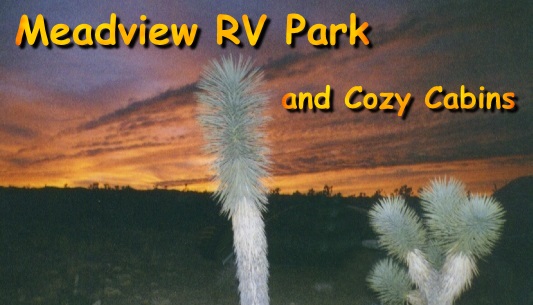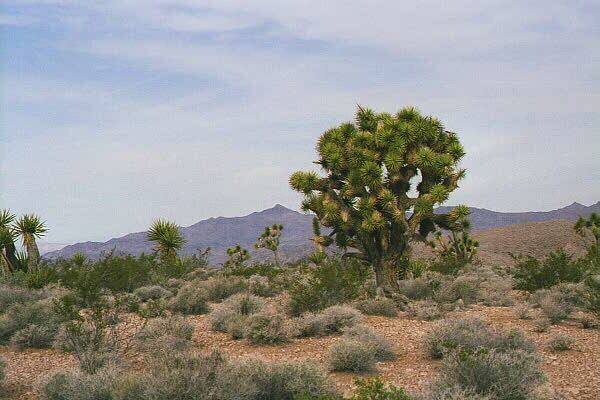

Meteorites
No eyewitness recorded the fall of one of Arizona's newest official
meteorites. The unique "Gold Basin" meteorite exploded over more than
50 square miles.
A small field team from Tucson, including a retired civil engineering
professor who discovered the meteorite, began collecting pieces of the
find in 1996. But it will take years to gather the remaining stones and
assemble the details of what happened, according to The University of
Arizona scientist who is part of the team working to recover the entire
meteorite.
"As far as I know, this is the first 'fossil-strewn' field found outside
of Antarctica," said David A. Kring, geologist and senior research
associate with the Lunar and Planetary Laboratory at the University of
Arizona, in Tucson. That the meteorite fragments survived exposure to the
elements for 15 millennia says that conditions even during the last of
the Ice Age must have been fairly mild, he added. Kring, who directs the
Lunar Lab's Meteorite Recovery Program, did a series of analyzes to
classify the meteorite. Classification is requisite for a meteorite to
be officially recognized by the Meteorite Nomenclature Committee, the
international body of scientists who assess meteorite finds. The Gold
Basin meteorite brings the number of officially approved Arizona
meteorites to 31.
Radiocarbon tests at the University initially dated the Gold Basin
meteorite at approximately 15,000 years. This date was confirmed in 2001
as being 15,000 years plus/minus 600 years. Kring theorized that 15,000
years ago, a small asteroid hit Earth's upper atmosphere with an energy
of between ten to one thousand tons of TNT. Preliminary evidence
suggests the asteroid may have been 6 to 9 feet, in diameter. It
lost energy as it plowed through Earth's ocean of air, then it exploded,
probably 6 to 18 miles above the ground.
All other known strewn fields of this type of asteroid, called a type L4
ordinary chondrite, are "witnessed falls," or those seen to explode and
fall to Earth, Kring said. L4 ordinary chondrites are relics of the
original debris that orbited the sun when it coalesced. The debris
accreted to form a small planetary body about 4.56 billion years ago,
probably in an orbit between the planets Mars and Jupiter, the region
now known as the asteroid belt. "Gold Basin is also special because it
is one of the most numerous collections of fragments ever found," Kring
said. "We've found more than 3,000 fragments so far, and it wouldn't
surprise me if we found another 10,000 fragments, in addition."
James D. Kriegh of Oro Valley discovered the first two fragments of the
Gold Basin meteorite on Nov. 24, 1995. Kriegh is a retired UA civil
engineering professor and member of the Desert Gold Diggers, a group
whose members spend their spare time gold prospecting. A few years ago,
Kriegh heard a talk by Kring on how to identify meteorites. Kriegh soon
began successful searches for meteorites, including the Greaterville
meteorite he found in November 1994. Kriegh said he and the others
garnered between one and 140 pieces of the meteorite on later field
trips. Collecting meteorites that fell to Earth 20,000 years ago after
sitting in space for more than 4 billion years "is every bit as exciting
as searching for gold," he added. (Mr. Kreigh died in 2007 - a nice
gentleman, we will miss him)
Kring, Kriegh, John Blennert and Ingrid (Twink)
Monrad, also of the Oro Valley-Tucson area, collaborate in collecting and
mapping the Gold Basin meteorite fragments, which range in size from a peanut to
a 3 pound softball that Blennert recovered. So far, the collection weighs more
than 34 pounds. The strewn field covers private and federal land, so the Gold
Basin meteorite recovery team has been coordinating the project with the
relevant federal authorities.
It's really a joy to have a person like Kriegh involved in this," Kring
said. "I told him these are the things we need to do to preserve the
scientific integrity of the site, and he did absolutely everything I
asked him to do. The team mapped the location of every fragment as it
was found, and they recorded how deep it was in the soil or if it was
found right at the surface."
"We have not yet hit the edge of the Gold Basin strewn field in any
direction," Kring said. "We don't know how big this is going to be,
eventually. Every time we go a little farther, we find more meteorites.
The goal has been to find as many of these fragments as possible. We
wanted to find the limits of this field before making it public. The
problem is, the field is just too big. We may be collecting samples for
another decade."
The largest collection of stones from a single meteorite is also in Arizona, Kring added. The community of Holbrook was pelted with 14,000 fragments of a meteorite that exploded in the early evening sky of July 19,1912. Witnesses reported one fragment severed the branch of a tree when it fell. Fragments from the meteor, an estimated 2 feet in diameter, showered to Earth over an ellipse roughly 1.5 square miles---a much smaller area than the fall site of the Gold Basin meteorite, which is estimated to be two to four times larger than the Holbrook meteorite.
An important distinction between the Holbrook fall and the Gold Basin
meteorite strewn field is that Holbrook is a classic case in which
important information on the distribution of the fragments was lost. A
mineral collector in Philadelphia paid Holbrook residents to collect the
pieces and ship them to him on the train, Kring said. In the Gold Basin
case, by contrast, he added, "I can tell you precisely where this sample
was collected, thanks to the efforts of the great field team."
Mapping exactly how meteorite fragments are strewn across the impact
site is no trivial academic exercise. Mapping the strewn field to
reconstruct how the meteorite fragmented should help scientists
understand what causes meteorites to break apart or survive intact as
they blast through the atmosphere, Kring noted. This is of great
interest to scientists trying to understand the hazards of asteroid
impacts. Given that the world's growing population is expanding over
more of our planet's surface, relatively common collisions with small
asteroids like the Gold Basin meteorite and the Holbrook meteorite
become growing hazards, Kring added. Ask the astronomers who search the
skies for near earth-crossing asteroids: They will tell you a future
significant collision is not a matter of "if" but "when".
(NOTE -- Kriegh and Monrad have donated five fragments of the Gold Basin
meteorite to the UA Mineral Museum, Flandrau Science Center, where they
are on display.)
Information courtesy University of Arizona. News releases and other
information about the UA are available at the News Services Web site: ![]()
Chondrite Found in
Gold Basin: Twink Monrad, one of the original discoverers of the Gold Basin
strewn-field, found a new chondrite within the field in mid-February of 1999.
She was searching for meteorites when she noticed a dark rock resting on the
surface. Her metal detector gave off a strong signal as she passed it over the
rock and the rock was strongly attracted to a magnet. The 797.6 gram specimen
exhibits a fresh appearance, almost a complete black fusion crust, unlike the very
weathered exteriors of the Gold Basin meteorites. Dr.Jim Kreigh cut off a small
slice which revealed a highly re-crystallized light gray interior with abundant
metal but few chondrules. It is reminiscent of L6 chondrites like Holbrook or
Bruderheim. Dr. David Kring of the University of Arizona Lunar and Planetary
Laboratory confirmed that it was a meteorite and tests are under way to
determine its petrologic type. The Gold Basin meteorites are type L4. It is not
unusual to find other unrelated meteorites within a strewn field as large as
Gold Basin. Monrad capped the find with a philosophical understatement: “Just
goes to show you that patience and perseverance pays off sometimes!”
![]() when working in this area.
when working in this area.

The Meteorites and gold
are out there
among the Joshuas and Yucca
Questions or comments about the website? E-Mail the webmaster.